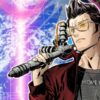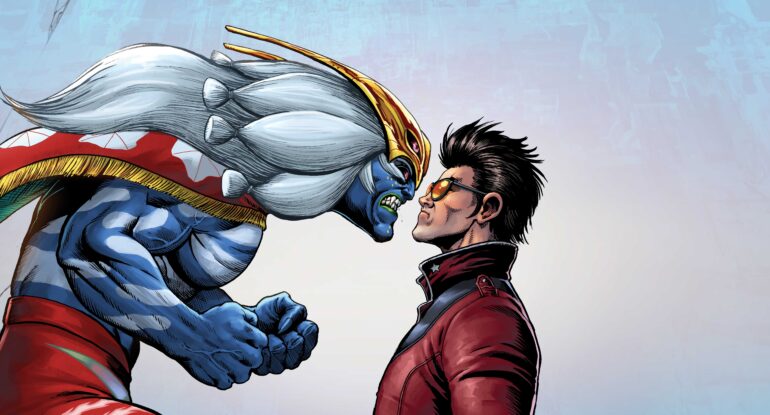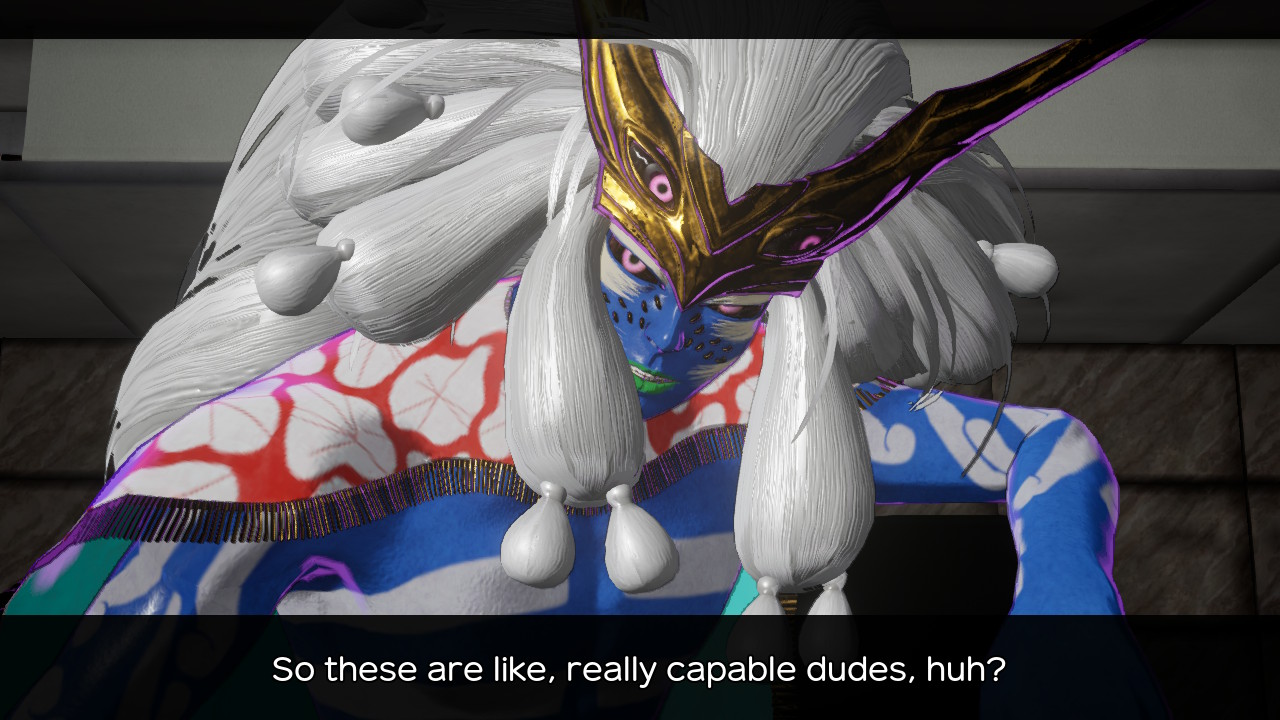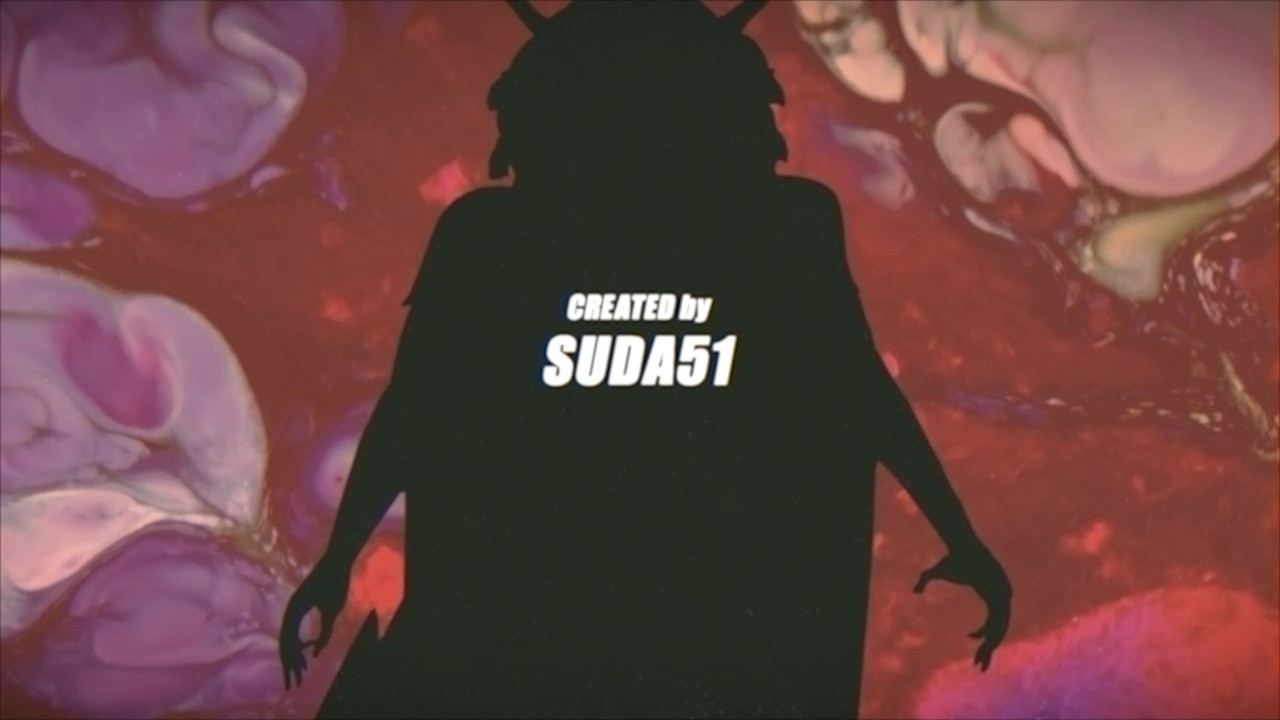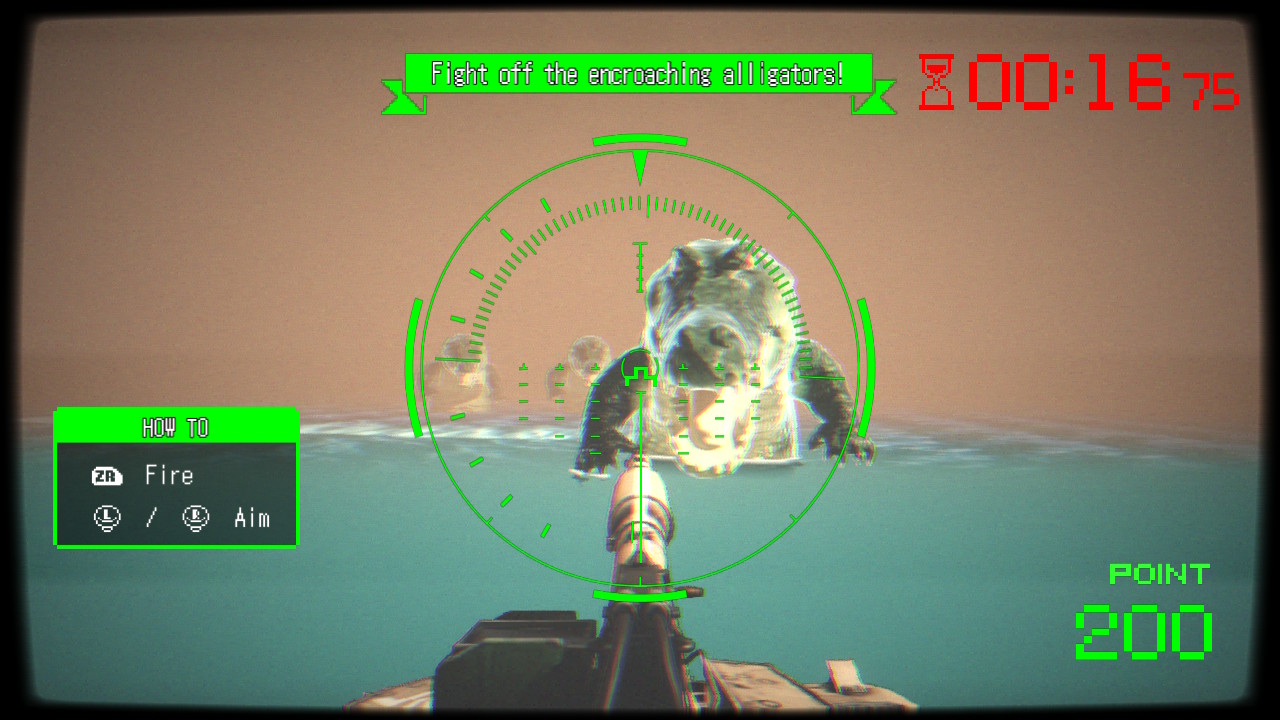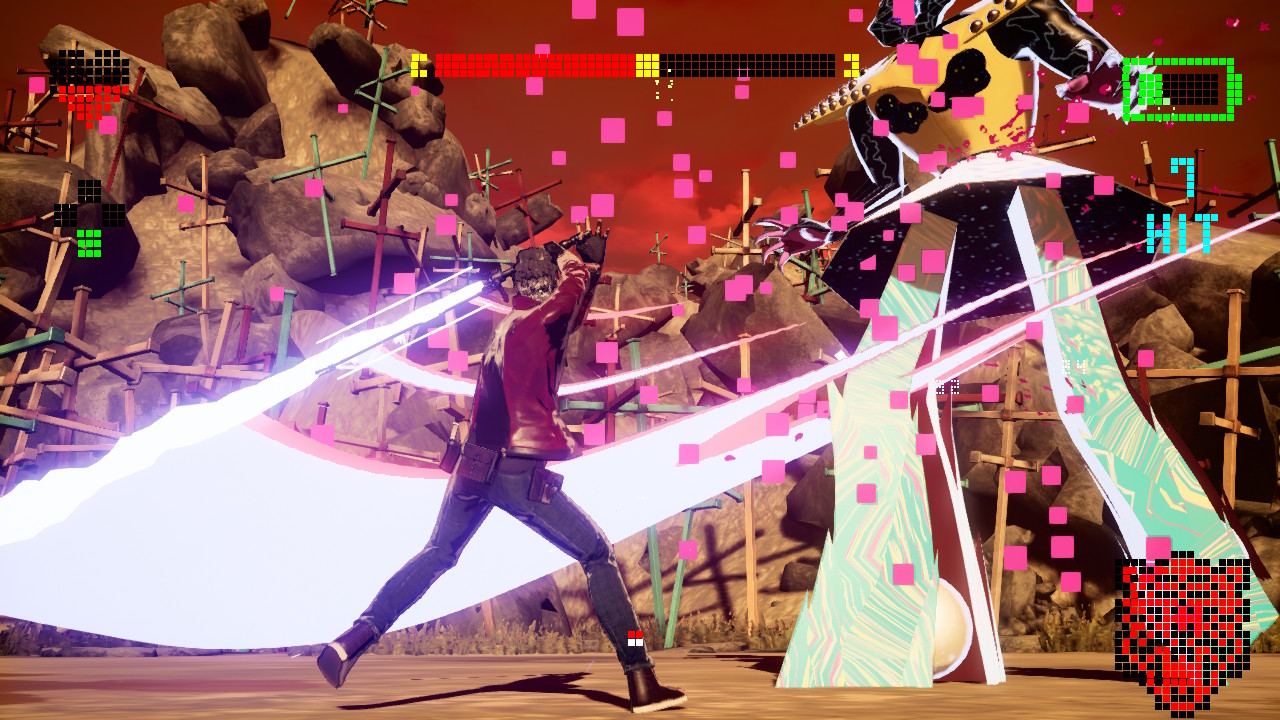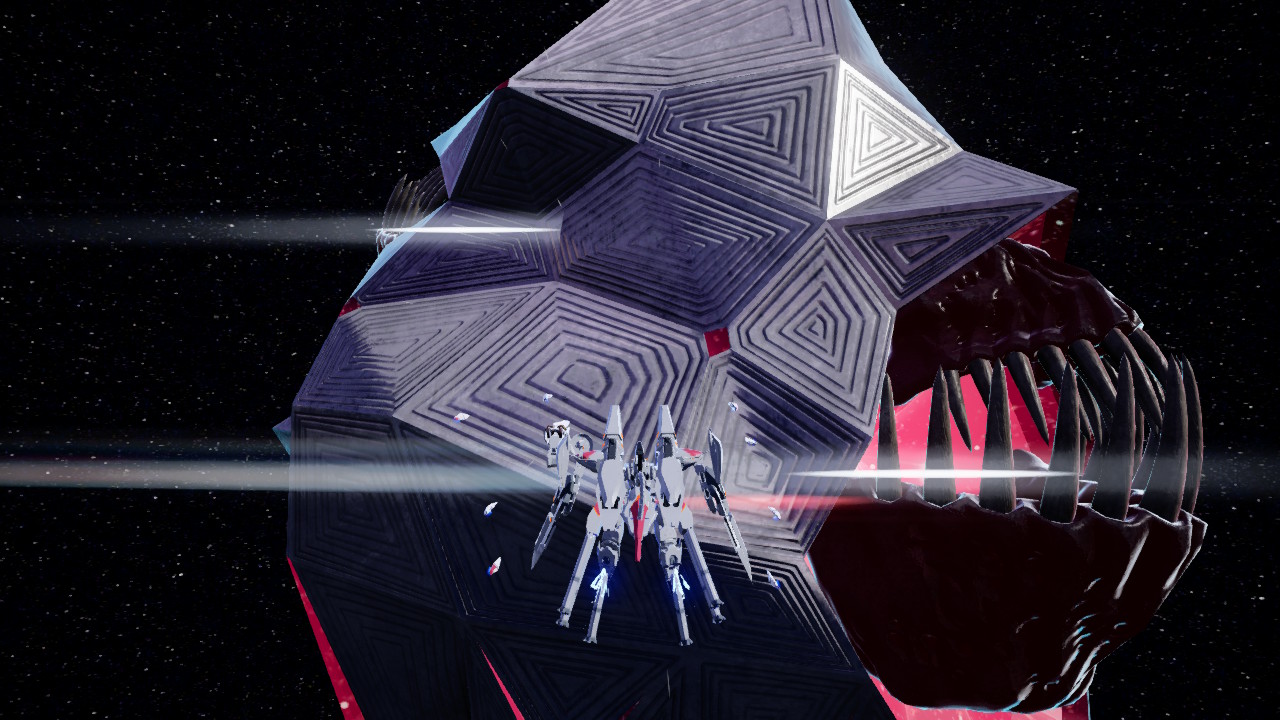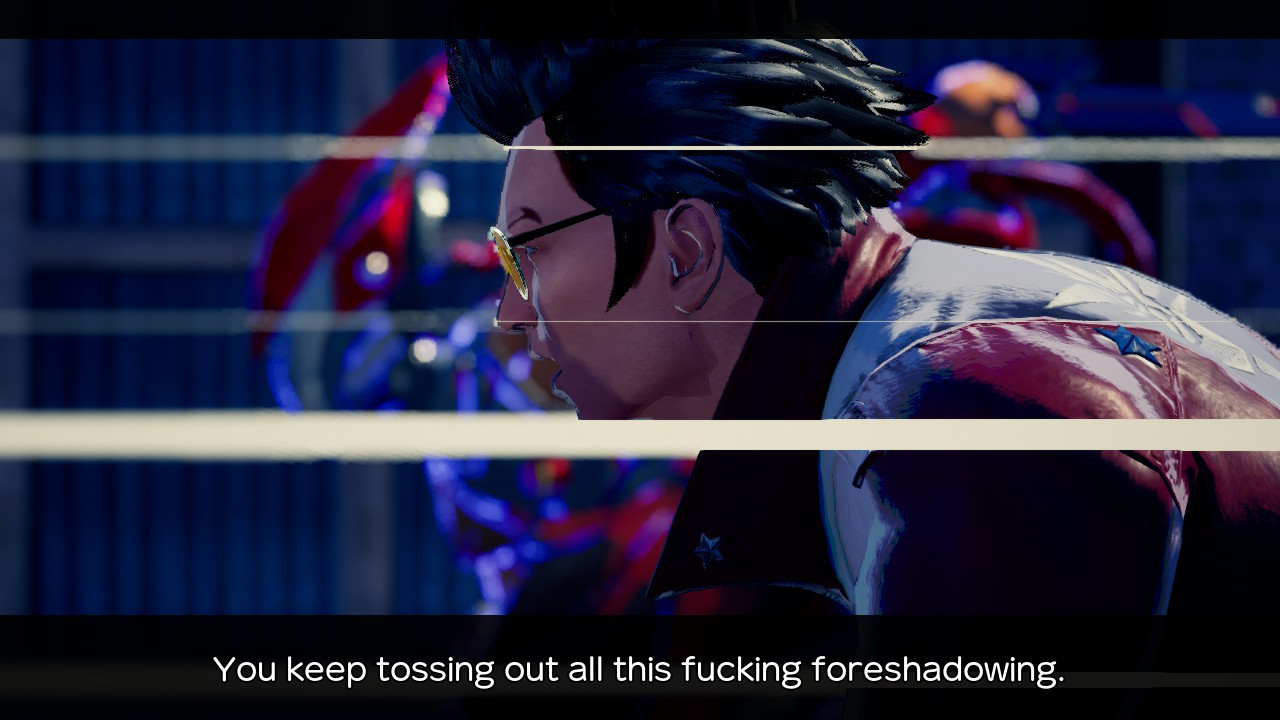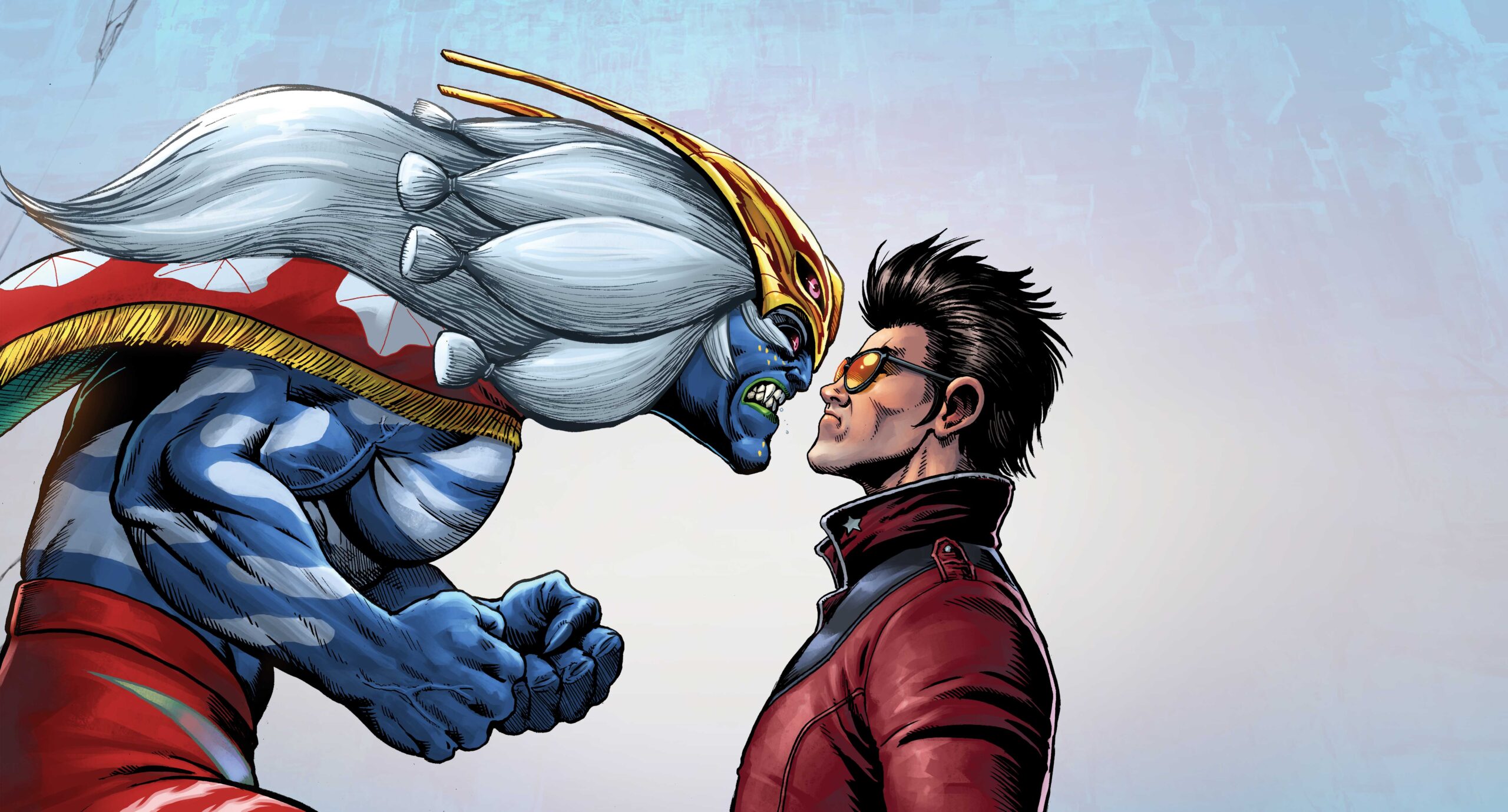No More Heroes is a franchise that I’ve appreciated for so many reasons. Chief among those is how protagonist Travis Touchdown has grown throughout the years. When the first game came out, I was seventeen and didn’t think there was anybody cooler. Now, almost fifteen years later, I realise he was a loser, the antithesis of what cool actually was. But across all those years, Travis has evolved, and so has No More Heroes as a franchise. With the advent of No More Heroes III, not only is Travis at his very best, but the game represents a remarkable achievement in honing everything that came before it.
No More Heroes III takes place nine years after the events of the second game and two years after the events of Travis Strikes Again. Travis Touchdown is once again the star and takes it upon himself to protect the planet as an alien ship descends on Earth. Onboard is an intergalactic alien prince known simply as FU, who has brought with him a troupe of other aliens who want to conquer the planet out of sheer boredom.
No More Heroes III continues the story of Travis Touchdown from previous games. Still, as a standalone game, it works just as well for newcomers. The history of the characters is rich – some of which spanning over a decade of games – but I wouldn’t be put off if you haven’t played the first two games or even Travis Strikes Again. Certainly, the direction that No More Heroes III takes things might seem a bit out of left field, but it naturally progresses from where Travis Strikes Again left things.
Regardless of your experience with the series, there’s no denying that No More Heroes III is a stylish affair. An endearingly potent love letter to video games, it’s clear that this is a product that auteur director Goichi Suda had every hand in creating. This isn’t just a tribute to No More Heroes as a series; it’s a celebration of Suda and his distinctly endearing style of game making. It’s self-aware and fantastically written. That being said, one or two characters definitely didn’t need to make a return and aren’t entirely developed as much as the others, but overall No More Heroes III is Suda’s stylish best, easily.
While No More Heroes III plays similar to the first game, this is hardly a bad thing. In it, you play as Travis Touchdown as he works his way up the Galactic Superhero Rankings. Essentially, you have to kill ten different bosses to save Earth from destruction. But this competition is run by the UAA, so in between missions you’ll have to scrounge the open world for jobs and money to pay for each of your ranking battles. It’s a simple premise elevated by its almost masterful execution.
Speaking of simple, the combat is both simplified and expanded from previous games. Travis will now fight with the same beam katana from beginning to end but still retains his wrestling move repertoire. In addition to this, the death drive device on his arm can now be equipped with skills that are a little bit wackier – including installing turrets, teleporting dropkicks, and telekinetic throws. These do a great job of keeping the combat fresh without completely overhauling it – though the combat in No More Heroes III is the smoothest the series has ever had.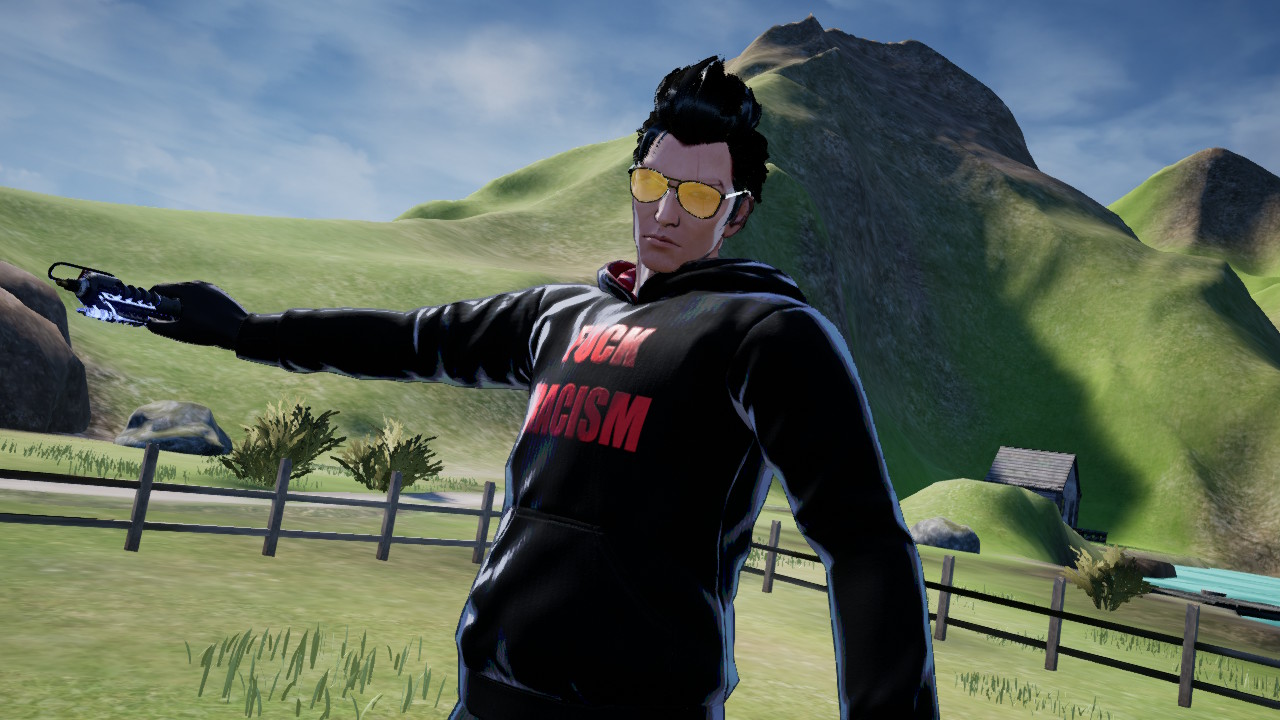
This streamlining applies to the general game structure too. In previous games, you’d pay to enter your ranking battle and then fight through rooms of enemies before squaring off with one of the game’s many boss battles. In No More Heroes III, things have been altered ever so slightly to create a better experience. After paying for a battle, you’ll be treated to some cinematics about the boss and their relationship with FU before being thrown straight into the battle. This revised structure results in a much better-paced experience with little to no downtime – a common issue that I found with both of the previous mainline titles.
But don’t fret – this doesn’t mean there is less “game” on offer here either. Between missions, Travis can explore five districts of an open world. To progress, you’ll find preliminary qualifying battles to take place in or pick up odd jobs to make money to pay for his entry fees. The battles themselves are all single-room affairs that have you fighting all kinds of unique enemy types. These admittedly feel super game-like in how separated they are from the story, though it also, once again, means that No More Heroes III feels immaculately paced.
I say this because No More Heroes III commits to throwing new stuff at you regularly. I can probably count around ten unique enemies in the game, but mixing those battle encounters with other activities keeps things fresh right through to the very end. These other activities include collecting scorpions, shooting crocodiles off the coast, going into space to defeat flying space peacocks with a mech suit, and mowing the lawn. It’s a wide variety of activities that never force themselves onto the player excessively but also never feels like grinding if you want to go for extra resources.
But what would a No More Heroes game be without boss battles? Absolutely nothing – so it’s a boon that pretty much every single one on offer here is fantastic. Where previous games would throw ten battles at you and rely on the uniqueness of each boss to shake things up, some of these battles can even be described as genre-bending. I’m not going to ruin any of them here – that would be cruel – but each and every one of them has a uniqueness to them that can’t be understated.
Regardless of which difficulty you play on (though I warn you – hard is HARD), using extra resources allows you to improve Travis and his abilities however you want. You can invest in some pretty standard upgrades to health, damage dealt, and the like. But you can also craft chips that will improve some aspects of Travis while reducing others. I favoured wrestling moves more during the later battles, so I equipped chips that would enhance my wrestling damage while dropping damage of moves I never used. It’s a system that never feels one hundred percent necessary but is there to tinker with to get that extra edge on harder difficulties.
Depending on how much you do, most players will get twelve or so hours out of No More Heroes III, though my first run took around fourteen. But there’s so much more to it than running through and doing all the battles. All kinds of collectibles are strewn throughout the open world. While they’re unnecessary, they will help those who want to finish the more formidable difficulty modes on New Game Plus. There’s, of course, a bunch of shirts and collectibles to find too.
From a visual standpoint, No More Heroes III employs a slightly different artistic direction to its predecessors, but it still manages to look like a treat. Everything is bright and pops, with most blood effects intermingled with rainbow effects to make everything look garishly outlandish. It’s an artistically vibrant game that is never boring to look at. That being said, while performance is rock solid during combat and action, it’s incredibly average and very choppy when driving around the game’s open-world—something that’s come to be expected on the Switch, but still worth mentioning.
The soundtrack is similarly bold, brash, and vibrant on the other side of the presentation coin. An eclectic mix of electronic, industrial, and even some reggae-tinged pieces permeates every battle and every menu to give the game a vibe like no other. The voice work is similarly fantastic – and it’s such a joy to see everyone return to voice their respective characters, no matter how small their roles might be. Robin Atkin Downes is the standout here, as expected, lending Travis a cocky bravado like never seen before. Other highlights include Noshir Dalal, who voices FU with so much charm and intensity that I want to be mates with him, even if he wants to conquer my planet.
As I played No More Heroes III, I couldn’t help but be enamoured with just how engaging an experience it is. At first glance, it looks to be a retread of the things that No More Heroes has done before – a bunch of boss battles with some kooky direction and a cringe-worthy protagonist. But No More Heroes III is so much more than that – it subverts all your expectations to offer up some of Suda’s best work yet.
